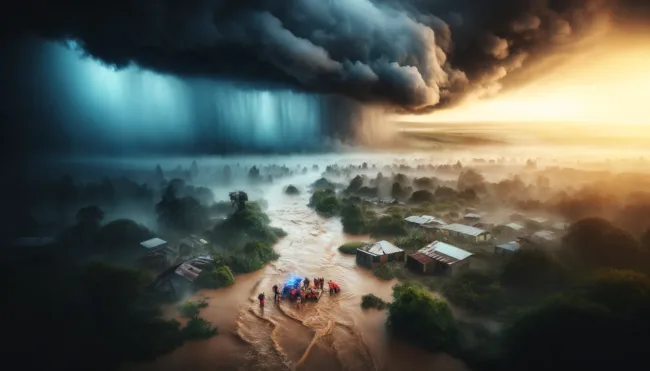Catastrophe unfolds: Over 180 dead in Kenya floods – Homes swept away, lives shattered!
Since March, floods and landslides have wreaked havoc across Kenya, resulting in the deaths of 181 people and forcing hundreds of thousands to flee their homes. This catastrophe has surpassed the death toll from last year’s El Nino-triggered floods, signaling an escalating environmental crisis in the region.
Widespread Destruction and Rescue Efforts
The relentless rain has obliterated homes, roads, and bridges throughout Kenya. In the central town of Mai Mahiu, the crisis deepened when flash floods claimed 48 lives this past Monday alone. The Kenya Red Cross’s South Rift Regional Manager, Felix Maiyo, reported the recovery of two additional bodies from the debris on Wednesday. Military personnel, aided by sniffer dogs, have joined the extensive search and rescue operations.

Crisis in Kenya: Torrential rains unleash deadly floods and landslides, claiming 181 lives and displacing thousands.
Government and Global Reactions to the Disaster
As the situation worsens, Kenya’s government spokesperson Isaac Mwaura announced a rise in the death toll by 10 to 179 on Wednesday. In response to the ongoing tragedy, global leaders and organizations have expressed their condolences and support. Pope Francis voiced his sympathy for the Kenyan people during a general audience at the Vatican, emphasizing his spiritual closeness in these trying times. Similarly, the White House extended its condolences, with spokesperson Karine Jean-Pierre highlighting the U.S. contribution to relief efforts through the U.S. Agency for International Development.
A Call for Enhanced Preparedness and Resilience
The recurring severe weather events in East Africa underscore the urgent need for improved disaster preparedness and response strategies. As the region grapples with alternating extreme droughts and floods, it is crucial for both national authorities and international partners to bolster infrastructure resilience and enhance early warning systems to mitigate the impacts of these increasingly frequent disasters.
Discover more from Business-News-Today.com
Subscribe to get the latest posts sent to your email.

